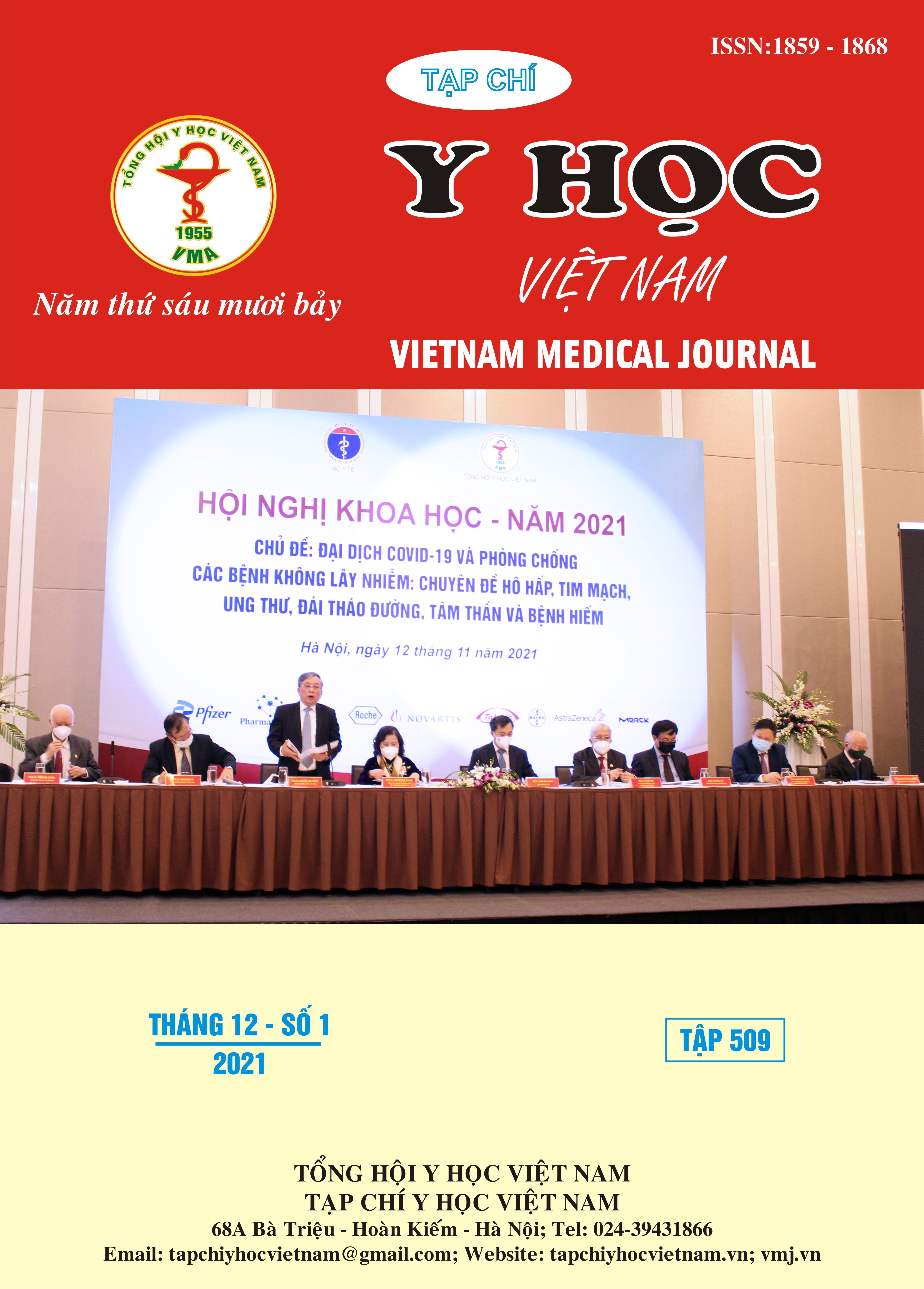EVALUATION OF LEFT VENTRICULAR FUNCTION BEFORE AND AFTER CORONARY ARTERY BYPASS GRAFT SURGERY IN PATIENTS WITH TYPE 2 DIABETES
Main Article Content
Abstract
Objectives: Evaluation of left ventricular function by echocardiography before and after coronary artery bypass graft surgery in patients with type 2 diabetes. Subjects and methods: a cross-sectionnal observation study in 46 patients with type 2 diabetes were included coronary artery bypass graft surgery from 8/2020 to 8/2021 at Hanoi Heart Hospital. Results: Mean age 66±8.73; male/female ratio is 2.83/1; 43.5% of patients smoke; the rate of chest pain was 69.6% and NYHA III - IV accounted for 28.6%. Echocardiographyresult: The number of disturbance areas before and after surgery were 3.52±5.39 and 2.54±4.87. Echocardiography resultin the group with preoperative EF < 50%: Dd before and after surgery were 53.3 ± 7,12mm and 50,3± 6,93mm. Ds before and after surgery were 40,4± 8,44mm and 36,8 ± 8,05mm, Vd before and after surgery were142,2±48,77ml and 124,2 ±38,9ml. Vs before and after surgery were77±42,13ml and 61,1 ±29,47ml, LVMI before and after surgery were135,5 ± 44,61 grams and 117,4 ± 30,17grams, EF before and after surgery were 39,22 ± 8,4% and 45,83 ± 13,39% There was a statistically significant improvement in ultrasound parameters in the group with preoperative EF < 50%: EF increased significantly while cardiac chamber volume, chamber size and left ventricular muscle mass decreased. Particularly in the EF group, the parameters decreased but there was no statistical significance. Conclusion: Coronary bypass surgery significantly improved left ventricular function immediately after surgery in the group with low EF before surgery.
Article Details
Keywords
Coronary artery bypass grafting, diabetes, left ventricular function
References
2. Nguyễn Công Hựu. Nghiên cứu kết quả phẫu thuật bắc cầu chủ vành ở bệnh nhân hẹp ba thân động mạch vành tại trung tâm tim mạch bệnh viện E. Published online 2018.
3. Szabó Z, Håkanson E, Svedjeholm R. Early postoperative outcome and medium-term survival in 540 diabetic and 2239 nondiabetic patients undergoing coronary artery bypass grafting. Ann Thorac Surg. 2002;74(3):712-719. doi:10.1016/S0003-4975(02)03778-5
4. Kapur A, Hall RJ, Malik IS, et al. Randomized Comparison of Percutaneous Coronary Intervention With Coronary Artery Bypass Grafting in Diabetic Patients. J Am Coll Cardiol. 2010;55(5):432-440. doi:10.1016/j.jacc.2009.10.014
5. Kappetein AP, Head SJ, Morice M-C, et al. Treatment of complex coronary artery disease in patients with diabetes: 5-year results comparing outcomes of bypass surgery and percutaneous coronary intervention in the SYNTAX trial†. Eur J Cardiothorac Surg. 2013;43(5):1006-1013. doi:10.1093/ejcts/ezt017
6. Järvinen O, Hokkanen M, Huhtala H. Diabetics have Inferior Long-Term Survival and Quality of Life after CABG. Int J Angiol. 2019;28(1):50-56. doi:10.1055/s-0038-1676791
7. Woods SE, Smith JM, Sohail S, Sarah A, Engle A. The Influence of Type 2 Diabetes Mellitus in Patients Undergoing Coronary Artery Bypass Graft Surgery: An 8-Year Prospective Cohort Study. Chest. 2004;126(6):1789-1795. doi:10.1378/chest.126.6.1789
8. Søraas CL, Larstorp ACK, Mangschau A, Tønnessen T, Kjeldsen SE, Bjørnerheim R. Echocardiographic demonstration of improved myocardial function early after coronary artery bypass graft surgery☆. Interact Cardiovasc Thorac Surg. 2011;12(6):946-951. doi:10.1510/icvts.2010.260414


